Bożena Cudak - 29.04.2017 08:07
What can we do for ecological sustainability?
Sustainability – What can we do? by Antónia Fülöp DNG Budapest/Hungary
In the past decades, our lives have changed a lot. We have experienced a huge growth in every field; if you just think about the agriculture, technological improvement and revolution. Our needs have also changed a lot. There was, and there is, a massive increase in our power needs, putting day by day a greater pressure and tension on the resources of our planet Earth.
However, as human beings, we always want to improve ourselves in every way, but now, we have to keep our eyes on three main things if we think about improvement and sustaining our modern way of life. We need competing needs of course, to move forward technologically and economically, and we have to focus on protecting the environment where we live. Some people, like I used to do, think that sustainability is just about the environment. But it's not true! If we think about sustainable development, it's also about our health as a society, that means that nobody should suffer from the results of environmental legislation, and it also means that we need to think about the long- term effects of our actions. Sustainability takes into consideration how we might live in harmony with the natural world around us, not causing damage and destruction to it.
As we know, sustainability is a very complex question, that's why the Hungarian Government made an innovation this year, this involves that elementary- and high school students have a „topic-week” about sustainability. To get a nearer view of what really happens during this week: It means 6-10-year- old children get acquainted with selection of rubbish and recycling, the older students focus on the long process of the food production and it is introduced to the students at secondary school. High school students will work with the problem of global warming and the consequences of the climate change. But not only the older children, but also the children in kindergarten are taught how to sort out their waste. I was very happy and surprised, as my little brother, who's 4 years old, said that „this one goes into the green bin”.
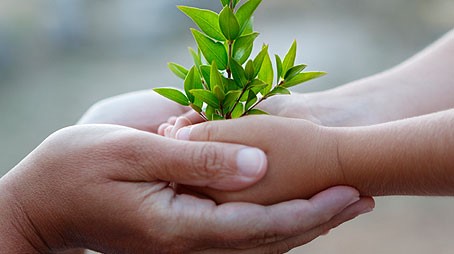 http://www.igbp.net/images/18.1081640c135c7c04eb480001213/1376383162339/sustainable_hands.jpg
http://www.igbp.net/images/18.1081640c135c7c04eb480001213/1376383162339/sustainable_hands.jpg
To sum it up, I think the most important thing when we think about sustainability is that we must teach sustainable living to the next generation, and furthermore: it's our turn to create the foundation for them, for us.
Posted 01.05.2017 09:32
Alexander Sallnäs - 02.05.2017 09:16
As you mentioned in the article we will create a foundation for future generations. The actions we do now will have an impact on the future and the survival of our planet. In my opinion the article you have written was very informative and you gave me a new perspective on creating a sustainable development. For example, what you said that sustainable development is not only about the environment but also about social health and justice is very true. I would also like to say that I am impressed to hear that the Hungarian government has launched new environmental reforms in the school which I believe will help Hungarian children receive more knowledge considering climate change and sustainable development. That is very important, that we inform our children, because they are the ones that have to take action and save the environment in order to create and achieve sustainable development.
Amanda Ryden - 02.05.2017 09:38
Hello Anónia Fülöp, As you said, sustainability isn´t just about the environment, it is also about all people´s health. It is important that no one suffers because of the environment and climate change. Here in Sweden we do not have that kind of extreme weather so people suffersa lot, which is great. But the weather does change, though. For example there isn´t that much snow in the winters anymore and when the spring comes, there is almost no water for the trees. Usually the snow which melts becomes almost all the water for the trees. So, when there is less water than usual, there are some people who do not have enough water for themselves, which makes them suffer a bit. This is of course a consequence of the global warming. In Växjö we have, for example, busses which run on green gas. The gas is made from the compost from the people in Växjö. This is great for the environment and the global warming. Amanda
Sebastian Holm - 02.05.2017 17:32
I think your article brings up an important topic, a topic which we all have to take into consideration if we want a sustainable future. Just as you mentioned, our work here does not just affect ourselves but also the next generations. Considering my own eagerness to have a good life, I believe it would be horrible if we made sure the future generations would not have the possibility to a good life just because of us. I liked the initiative from the government in your country to teach all the young people about sustainable development, because we (the young generation) are the ones who will create the foundation for the next generations and therefore it is important that we are aware of our responsibility. Thank you for a good article Antonia! Sincerely, Sebastian
Meet Dan Phillips, the man who gives objects a new life by Sofia Sorbelli, LSP Assisi/Italy
Have you ever got rid of something that you considered no longer useful, even if it actually was? Probably you did, but you never really gave it much thought. But don’t worry (in a manner of speaking): we all act like this, because we live in a society based on waste and the quest for perfection. By doing this, we produce up to 6 tons of waste per capita a year, turning our planet into a living landfill.
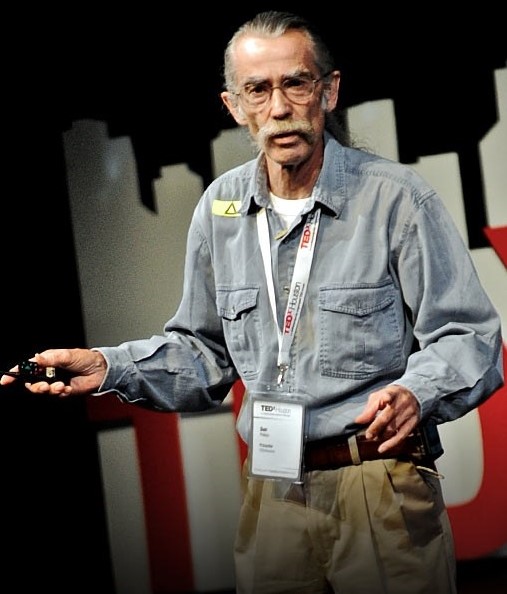
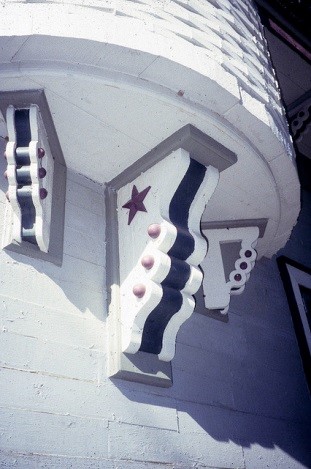 Both images taken from "Pixabay"
Both images taken from "Pixabay"
But there is someone who is trying to react to this situation through the use of his abilities and creativity. Dan Phillips is an American designer and builder from Texas. He is the founder of Phoenix Commotion, a construction company established in 1997 which focuses on designing eco-friendly homes for low-income individuals and families. The company aims to reduce landfills through the use of recyclable materials, to provide low-income houses by using cheap materials and to give job opportunities to the unemployed by training inexperienced workers. In June 2010, Phillips held a Ted Talk in Houston presenting some of his works to show the financial and ethical benefits of sustainable building, made through the use of recycled components instead of raw materials. Two of his best works are the Victorian House, whose turret presents coloured and silicone-filled chicken eggs as architectural buttons, and the Budweiser House, designed with beer cans, and probably the only place in the world where you can admire a bath with beer taps as operating handles tap. During this conference, Phillips stressed the importance of correcting our behaviour and promoting creativity and individuality to decrease the amount of waste produced in the building industry: in fact, we all desire to fit in a specific category in our society, seeking for perfection, even if it means forgetting who we are; that’s why we fling away anything which doesn’t meet the aesthetic needs imposed by society. In addition, we want our houses to be as similar as possible to a role model, even if we can’t afford the materials used to build it. So we resort to fragile and polluting but cheaper materials to build our houses: this behaviour is clearly dangerous both for us and for the environment. We have the possibility to turn the tide now through a little and simple gesture: for example, we can pay attention to what we decide to throw away, since that object could still be useful, or at least it could have a new use. Furthermore we should stop following trends imposed by society instead of our personality and creativity: we all have different abilities and possibilities and they should be cultivated as a treasure, instead of being hidden.
Posted 15.05.2017 19:56
Men and environment by Josephine Ficola, LSP Assisi/Italy
Recently I listened to a very interesting TED talk whose title is “Buildings that blend nature and city”. The speaker was Jeanne Gang, an American architect who wanted to explain that what architects really design aren’t cities but relationships between people. It was really interesting to see how physical space can help build stronger relationships but it also made me think about how much men and the environment interact with each other. In fact, human events don’t depend only on social and cultural factors, but also on complex cause-effect links between men and nature.
While on the other hand we have the human influence on the environment. Throughout history humans have affected the natural world and the interactions between the human society and the environment have been constantly changing. In fact, man always interacts with the environment and modifies it. However, if at the beginning these changes were marginal, with the massive demographic growth of the recent decades and the industrialization the destruction of the environment has become alarming.On the one hand we have the impact of nature on man. There are always more studies and campaigns which show us that a connection with nature makes us healthier and happier people and therefore more inclined to new relationships. Being in nature or even viewing naturalistic scenes reduces anger, anxiety and stress and increases pleasant feelings. But it also has a positive impact on our physical wellbeing because it reduces muscle tension and the production of stress hormones.
The only way is that of sustainability, both environmental and social. There is no universally agreed definition on what sustainability means but the original definition of sustainable development is usually considered to be: “Development that meets the needs of the present without compromising the ability of future generations to meet their own needs” (Bruntland Report for the World Commission on Environment and Development). Today, many people around the world have demonstrated their desire for sustainability, but unfortunately, this goes against the globalized economy that is in the hands of the "powerful people of the planet."This is why sustainability seems more and more utopian and far from concretization.


Photos taken by: Pixabay
Posted 15.05.2017 20:13
The green concept by Martina Beneduce LSP Assisi / Italy
Bilal Bomani is the director of NASA's Greenlab Research Facility in Cleveland, Ohio. He is a scientist and he discusses extreme green concepts and focuses on a new type of sustainable fuel. What he wants to do is to emphasize the importance of products that are sustainable, alternative and renewable. In one of his talks from August 2011 he describes what he and his team do in the Greenlab and he explains the significance of the green concept. But what does green mean? Bomani uses three metrics to determine green: alternative, renewable and sustainable. Alternative means different from what is being used today and that has lower carbon footprint; renewable means that it comes from Earth’s natural replenishing resources, such as sun, wind and water; sustainable means preserving what you are doing for future use. The task of NASA is to develop the next generation of aviation fuels and it focuses on this sector since it uses more fuels than others. For this reason, they want to find an alternative and Bomani explains the value of the big three at GRC, which is another metric. The big three are: do not use arable land, do not use food crops and do not use fresh water. The aim of Bomani and his team is to be extremely green and at the same time to meet the big three. Greenlab resource facility, in fact, is dedicated to the next generation of aviation fuels using halophytes, a salt-tolerating plant. In this way, they do not need fresh water but salt water, which is 97 % of the water in the world. In this lab, they use particular experimental methods and they do not use chemical fertilizers. Moreover, they have many plant species and each one is useful for different applications. For example, Chaetromorpha is a macro algae and it is particularly significant since its properties are similar to those of plastic, so scientists are trying to convert this algae into bio-plastic.
I firmly believe that this green project is very important and useful not only for the present, but in particular for the future, as it is essential to preserve what we have. For this reason, it is fundamental that everyone does something to help save the world, because little things do big things.Of course, all of this is possible thanks to the team of the green lab, composed not only by scientists, but also by students. Bomani invests in students, as they are young and can change the future of the world. This “green group” is trying to find a global solution for food, fuel, water and electricity. “I want to help save the world” is what Bilal Bomani said and it is the most important goal of this project.
And you, what do you do for the environment?
 Photo taken by ”Pixabay"
Photo taken by ”Pixabay"
Posted 15.05.2017 21:09
Producing sustainable food by Luisa Chiocchetti, LSP Assisi/ Italy
Have we ever considered that agriculture damages our environment?
The problem of the previous generation was that of producing more food in a cheaper way. To solve this we created a global farm which connected the whole world using every means of transport. Thanks to this we could feed 7 billion people involving only few of them. This system is clearly polluting.
In addition to causing climate changes, our methods are slaves to them. The producing areas in the world shift continuously together with temperatures, atmospheric phenomena and hydrogeological transformations.
The most evident factor of pollution is pesticides and all chemical treatments which are spread through machinery that aggravates the situation by polluting the soil, and in turn the food, the underground, water, air and so on. The chemical interventions concern the harvests too: the products are picked when they are not ready to be eaten
yet so they are grown through artificial substances. For example, we consume apples that have been picked about eleven months before and this is possible thanks to cold storage and gas. These gases are so toxic that workers can die while retrieving apples.
Hence starting from the production process to our tables we severely pollute our environment.
Is there a unique way to produce?
Caleb Harper, in his TED talk “This computer will grow your food in the future” of 2016, explains that he created a lab to produce food in a sustainable way. He and his team can cultivate any kind of seeds through technology that creates the ideal climate, for the growth of the plant. In this way they obtain food in three weeks. The best thing is that this digital system can be exported anywhere and can connect all the farmers who need to share information. We know the problems concerning food, so it’s time to have a platform where we can communicate about what we are producing and how.
I think that we have the means to change our methods that are sometimes too aggressive, too linked to economic interests and to start employing these innovative technologies also in agriculture without losing the contact with nature. Harper’s proposal is not far from reality but somehow achievable if we consider our potential. We should achieve the balance between nature and traditional methods and what we are able to invent to preserve our world. It’s time to mix our intelligence with the magnificence of nature to take care of those populations in difficulty and of our shared house, which is the Earth.
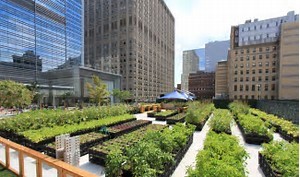 Photo taken from geograficamente.wordpress.com
Photo taken from geograficamente.wordpress.com
Posted 16.05.2017 21:35
“A forgotten Space Age technology could change how we grow food”
by Giulia Violini, LSP Assisi/Italy
This is the title of the conference held by Lisa Dyson last year, which I saw a few weeks ago. Dr Lisa Dyson is the CEO of Kiverdi, a technology company with the mission to develop innovations. She has a diverse background in management, business consulting, technology development and scientific research, and she also has a passion for creative problem solving. That is why the topic of the conference was ‘Sustainable production’, which allows the resources we use nowadays and used in the past to regenerate, in order to provide the same level of resources of the previous periods to the future generations, reducing environmental impact.
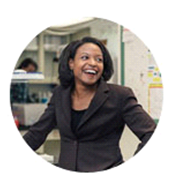
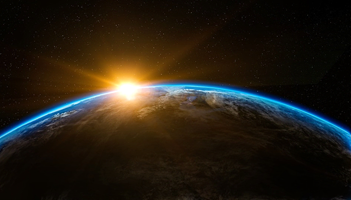 Pictures taken from: Kiverdi, Pixabay
Pictures taken from: Kiverdi, Pixabay
According to studies, in 2050 the population will reach about 10 billion, so food production will increase and we will need more resources and raw materials, which is why we need a system that allows us to sustainably expand the production scale and avoid waste. This system has been found by Lisa Dyson and a colleague and was inspired by an idea developed by Nasa that had the goal of producing food on a spaceship where space and resources are limited. This system is based on microorganisms that capture carbon dioxide, produced by men, and then converting it into a nutritious, carbon-rich crop. In this way man can eat these crops creating a continuous cycle of carbon. With this innovation Lisa and her team have managed to produce an oil similar to palm oil that can be used for food or even for creams and perfumes, another oil that can even be used as a fuel for reaction engines, and flour. NASA discovered this system in the 1960s and it has never been used only because we haven't gone to Mars or to another planet yet. But why, before Dr Dyson's interest, nobody had thought about using this method on Earth? After all, we are small astronauts and the Earth is our spaceship. One day the resources will end, but we don't realize it. I think this system could be really useful to recreate resources without harming the environment, these microorganisms can get products in a matter of hours, they grow in the dark and in small containers. So they can grow in any season and anywhere without needing large fields, which are often deforested areas. This is the title of the conference held by Lisa Dyson last year, which I saw a few weeks ago. Dr Lisa Dyson is the CEO of Kiverdi, a technology company with the mission to develop innovations. She has a diverse background in management, business consulting, technology development and scientific research, and she also has a passion for creative problem solving. That is why the topic of the conference was ‘Sustainable production’, which allows the resources we use nowadays and used in the past to regenerate, in order to provide the same level of resources of the previous periods to the future generations, reducing environmental impact.
Decreasing forests, soil degradation, lack of water… our future is in danger and we must hurry to find ways to produce resources, otherwise our “spaceship” will crash.
Posted 17.05.2017 19:53
Ryan Gravel in «How an old loop of railroads is changing the face of our city».
by Lucrezia Fioretti, LSP Assisi/Italy
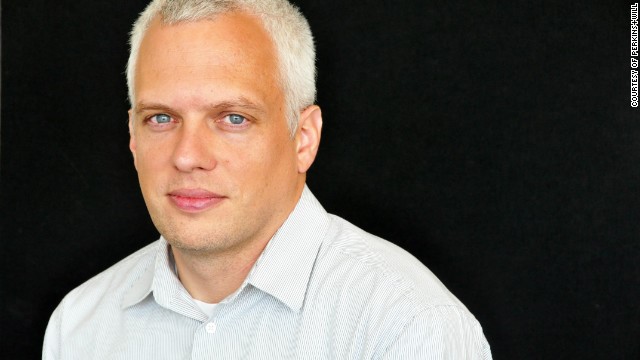
This is the title of a TED Talk by Ryan Gravel that I heard last month. Ryan Gravel is an urban planner, designer, and author working on site design, infrastructure, concept development, and public policy. During the 90’s he spent six months in Paris where he came into contact with the local food and environment. This arose great interest in him. Paris changed the way he thought of the structures of the world around him, because the role of infrastructure is not just the transportation of water and energy, but also the foundation of our economy. When he returned to Atlanta, his hometown, he wanted to change the face of the city but also the lives of the inhabitants trying to create a healthier and cleaner environment re-using old local resources. He took master in architecture in 1999 and in the same year he had an idea: the adoption of an obsolete loop of an old railroad circulating downtown. People fell in love with a vision of the city, he says, better than what they saw from the windscreen of their autos and they helped to create it. They inaugurated it in 2012 and since then it has produced a 3 million dollars profit. The purpose of Ryan Gravel was to create a pleasant and healthy place which would have changed the face of the city, but even the desire of the inhabitants to continue to live in Atlanta. I think actions like these should be an example for everyone: when Ryan had this idea, he was a young man, a little older than us, and he had the strength, that sometimes only young people have, to carry on with courage his idea. It's been nearly 20 years since he suggested his new creation, in this period technology has made remarkable progress and it has proven to be able to do almost everything, but without human hand and mind it would not be able to do anything. We just need someone with a great willpower, someone who cares about his country, his hometown, the environment and the Earth and looking after these aspects, he has to create a better future, not only for himself, but for the future generations, to make sure we can leave the world better than how we found it. Human are not apart from nature, they are part of nature, and for this reason we must protect ourselves by helping it, re-discovering old abandoned landscapes and not destroying those left. Because Earth does not need us to continue to live, but we need it to live.
So… let's take care of the Earth!
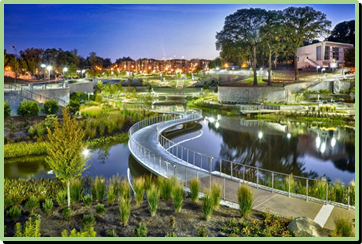
http://www.investatlanta.com
Posted 20.05.2017 12:56
Giving hope to the planet by Francesca Acori, LSP Assisi/Italy
One of the greatest challenges in the history of humanity has to be faced nowadays: Climate change.
Every day we hear about how our world is in danger and that we must do something to limit the damages and stop global warming. There are many campaigns carried out with the purpose to inform about the risks for the environment of using polluting substances but it is not that frequent to hear talking about the risks of desertification. What it is? Desertification is the process by which fertile land becomes desert, typically as a result of drought, deforestation, or inappropriate agriculture. It is very dangerous for the environment because it causes soil erosion and loss of soil nutrients endangering human and animal life.
One of the biologists involved in the awareness campaign about this topic is Allan Savory. Allan was born in Rhodesia, southern Africa. He pursued a career as a research biologist and Game Ranger in the British Colonial Service of Northern Rhodesia (today Zambia), and later as a farmer, game rancher, politician and international consultant, based in Southern Rhodesia (today Zimbabwe).
In the 1960s, while working on the problems of increasing poverty and disappearing wildlife in Africa and around the world, he made a significant discovery in understanding what was causing the degradation and desertification of the world’s grassland ecosystems.
In his TED talk he speaks about how almost two thirds of the world are turning into desert, and about the risks this process is causing to the environment. According to his words, this phenomenon is like cancer and we are not able to recognize it until it is in a terminal form, and in numerous cases we can’t see that even grassland with a lot of precipitations (not only arid and semi-arid areas) are being affected by this grim deterioration.
Savory explains that the main cause of desertification is the ground left bare, which is not in the condition to absorb rainwater anymore, so it evaporates out again, damaging the soil. When this happens carbon is given off in the atmosphere. If we consider this, he adds, we see that fossil fuels are not the only thing that is causing climate change and that fighting desertification is important on a global level to reduce the carbon emissions in the atmosphere.
Savory’s mission is to break down the belief that desertification is mainly caused by livestock (overgrazing plants and leaving soil bare, giving off methane) going through a journey of ri-education and discovery.
He explains how during his career is has had the opportunity to discover that during man’s history there was not a precise awareness of what is causing and, later, accelerating desertification. Travelling around the world he has found out how the removal of livestock is not the solution to the problem but that rather it is making it worse. The best way to solve this issue is to keep grasslands healthy, so that they can have an influence on micro and macro climate.
One of the main problems is that grass has to decay biologically between a period of humidity and another, otherwise the soil dies and the oxidation starts, slowly turning grass into woody vegetation. Man is facing the problem using fire at the moment, but this is very harmful for the environment. According to Savory’s opinion the only solution left to biologists and scientists to do this is using livestock, gathering and moving it mimicking nature, producing manure and urine, natural fertilizers. In this way soil will absorb water, store and break down carbon, starting to reverse climate change.
Obviously, he explains, a lot more was needed than bunching and moving the animals, so it was necessary to find out planned techniques, which he later learned from other professions. From this he developed the “holistic management and planned grazing” considering environmental, social and economics complexity. So he went on to work, as a resource management consultant, with numerous managers, eventually on four continents, to develop sustainable solutions.
His early results in reversing land degradation in a manner that made, rather than cost, money were impressive. Since the 1980’s, thousands of land, livestock and wildlife managers have been able to obtain consistent results following his methodology.
In my opinion, Savory’s discoveries and work have been very important for our environment and I also think his view of the question is worth spreading as possible solutions to the problem of climate change. What surprised me about his speech is the hope he is giving to our planet and future, and for that reason I think it would be very important to give this solution a chance, without wasting this possibility.
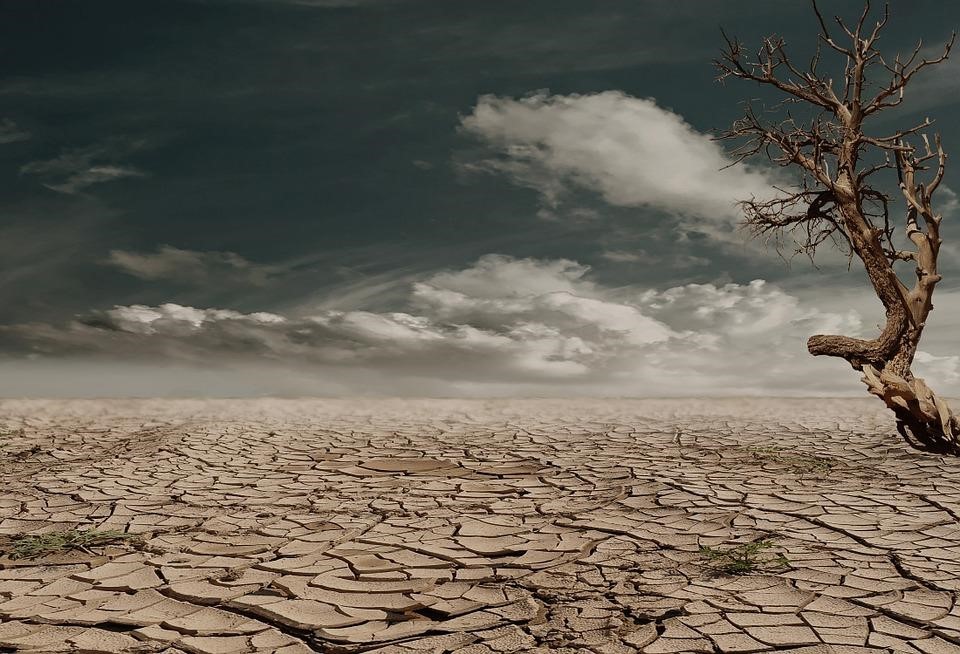 taken from Pixabay
taken from Pixabay
Posted 07.06.2017 12:33
A sustainable solution to feed the world by Anna Maria Gullo, LSP Assisi/Italy
Do you know that by 2050 there will be 2.7 billion more people than today?
How do you think our global food system could handle this situation?
Mike Velings, an entrepreneur from the Netherlands, the co-founder and the driving force behind Aqua-Spark (a global investment fund for sustainable aquaculture, combining a healthy financial profit with environmental and social impact), in his TED talk (filmed in October 2015) answers this last question and proposes a solution.
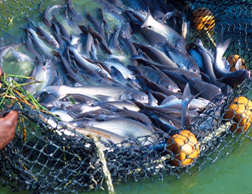 Photo taken from: Pixabay
Photo taken from: Pixabay
He supports what a team at Anglia Ruskin Global Sustainability Institute suggested, that our current systems are not going to feed a growing global population and our society might actually collapse in the next 30 years if we don't change our global policies and food production systems. Furthermore, society is globally getting richer, incomes have risen, so has protein consumption and we are going to need at least 70 percent more proteins than what is available to humankind today.
Currently the main source of animal proteins is our ocean; nearly 3 billion people depend on it every single day. Fish, in fact, apart from being healthy, preventing heart disease, providing key amino acids and key fatty acids like Omega-3, is the most resource-efficient animal protein available to humankind, aside from insects. At the same time, our global fisheries are two-and-a-half times larger than what our ocean can sustainably support, meaning that humans take far more fish from the ocean than it can naturally replace.
Starting to consider the possible solutions, the speaker says that to become all vegan could be one of them, but a bit unrealistic. The real solution lies in aquaculture, the farming of fish, plants like seaweed, shellfish and crustaceans. Fish is the last food that is hunted but the traceability of it, in fisheries, is uncertain: as a matter of fact, it's impossible to know what it ate during its lifetime, and what pollution it encountered. Instead, in a fish farm, you know exactly what the fish eats (usually microbes and insects) and where it lives: in controlled, natural conditions and with the help of new technologies brought by the “blue revolution”. Moreover, farming fish is healthy for the fish, for us and for the planet: you need just one pound of feed (a lot less than for cows) to farm one pound of fish, because fish float and they don't need to stand around all day resisting gravity, they are cold-blooded so they don't need to heat themselves and they need very little water. In conclusion fish farming is by far the best animal farming available to humankind and it has a minimal footprint on the planet.
Actually before learning about this talk I ignored the food situation of the world; this talk hasn't been only interesting but has changed the way I see food! I think it's fundamental to understand how much it means in our lives and that eating healthy is a right for everyone, knowing that we are not plundering our oceans and looking for the benefit of the present and the next generations. I've realized that we all should demand farmed fish on our plate, one that's farmed well and that's farmed healthy. We should always ask for details when we order seafood (and, in general, all animal food), in order to show that we really care about what we eat, and we want to eat something that we can trust that's good for us, good for the animal, good for the planet!
Posted 07.06.2017 12:41
Alfred Petersson - 21.08.2017 21:18
As I can't read and give a reply to all of the articles on this topic, I've chosen Francesca Acori's Giving Hope to the Planet and Anna Maria Gullo's A Sustainable Solution to Feed the World. These articles really demonstrate that the effects of climate change can be seen everywhere - in the air (for example as greenhouse gases), in the seas (as overfishing) and on land (as desertification). Francesca's article about desertification was on a topic I hadn't even heard of before, which really shows how little attention this problem has been given in the media. I really learned a lot of new things from it! The other article by Anna Maria also was really interesting, and gave me a new perspective on farmed fish.
In a way, the two articles tie in neatly with each other. As Anna Maria wrote, the future might lie in farming fish and other underwater plants and animals. Maybe this could help take some of the strain away from land-based food production? If more of our food came from sustainable aquaculture, we wouldn't have to produce as much food on land. Hopefully this could enable us to take care of both land and sea.
Thank you for two very interesting and informative articles! Sincerely, Alfred